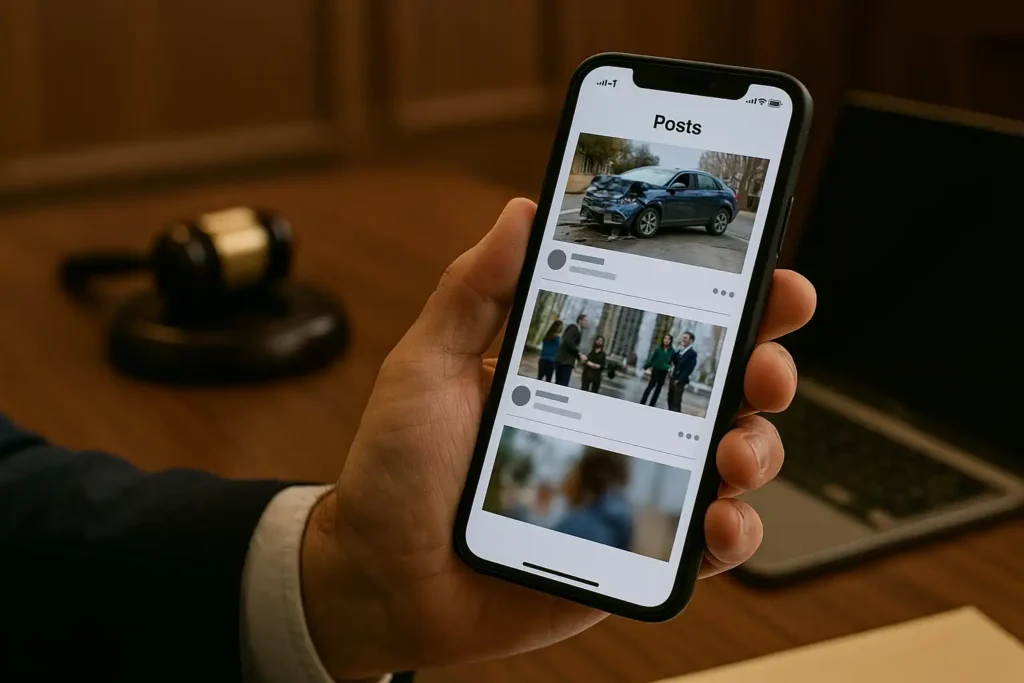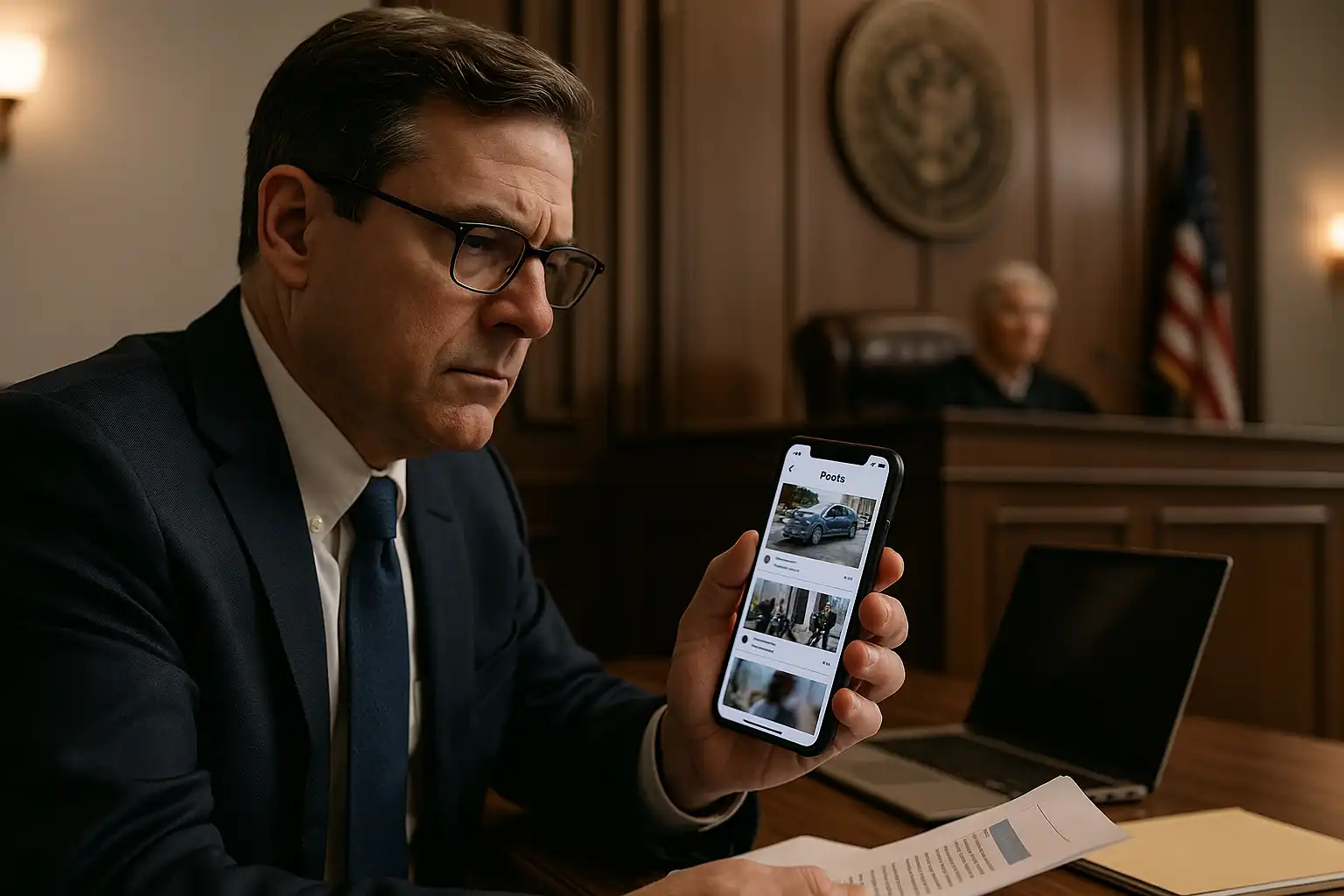In today’s hyper-connected world, your online presence speaks louder than ever. Whether it’s a quick Instagram story, a TikTok clip, or a Facebook update, every post paints a picture of your lifestyle. But if you’re involved in an accident claim, these seemingly innocent posts can dramatically impact your case. In 2025, social media and accident claims are more intertwined than most people realize — and the consequences can be costly.
How Social Media Became a Legal Battlefield
Insurance companies have evolved. They no longer rely solely on traditional evidence like witness statements or police reports. Instead, they now employ advanced AI tools that scan and analyze claimants’ public profiles. A single image or caption can be misinterpreted and used to challenge the extent of your injuries or even your credibility.
For instance, if you claim a shoulder injury but post a selfie lifting your child or holding groceries, the insurer may argue that your pain isn’t as severe as you described. Even if the photo was taken before the accident, once it’s public, it can still raise questions in court.
What Kind of Posts Can Hurt Your Claim
Many accident victims underestimate how even harmless posts can be twisted by opposing attorneys. Here are examples of posts that often create problems:
- Photos showing physical activity: Even light exercise or hiking can be used to argue that your injuries are exaggerated.
- “Check-ins” and tagged locations: Visiting a theme park or attending a concert may be seen as proof that you’re not seriously injured.
- Posts about your case: Talking about your settlement, your lawyer, or the other party can violate confidentiality and damage credibility.
- Humorous or sarcastic comments: Insurance adjusters may quote these out of context to suggest dishonesty.
Why Deleting Posts Can Make Things Worse
Many people panic and delete old posts after an accident. Unfortunately, this can lead to allegations of evidence tampering. Courts treat social media data like any other form of evidence — and attempting to hide it can backfire. Instead, talk to your attorney first. They can decide whether a post is relevant or how to provide context if the defense brings it up.
How Social Media Can Help (When Used Wisely)

Not all social media use is bad. When used carefully, it can actually strengthen your claim. For example, posting factual updates about your medical recovery, without exaggeration, may demonstrate honesty and transparency. Sharing supportive messages from friends or awareness posts about safety laws can show authenticity, not deception.
Moreover, social media can work in your favor when the opposing party posts incriminating evidence. If a negligent driver uploads a photo showing them drinking before a crash, or posts a location tag proving they weren’t where they claimed to be, your lawyer can use that to establish fault. Evidence works both ways.
Tips for Smart Social Media Use After an Accident
If you’re currently involved in a personal injury case, consider the following tips to protect your interests:
- Pause before posting: When in doubt, don’t post. Assume everything could be seen by the insurance company.
- Review your privacy settings: Set your profiles to private, but remember — “private” doesn’t mean “invisible.”
- Ask loved ones to avoid tagging you: Their posts could still be discoverable in court.
- Refrain from posting photos of travel or recreation: Even unrelated outings can create the wrong impression.
- Keep communication with your attorney off social media: Use secure channels for all legal updates.
How Attorneys Handle Social Media Evidence
Modern accident attorneys now integrate digital forensics into their strategy. This means gathering metadata, timestamps, and location data from online sources to reconstruct timelines. If the opposing side fabricates or manipulates evidence, lawyers can use forensic analysis to authenticate the truth.
Our firm, for example, often reviews both your and the other party’s digital footprints to ensure a complete picture of the events. In some cases, these efforts reveal inconsistencies that become pivotal in winning higher settlements or even full judgments in favor of the injured party.
Real-Life Examples of Social Media’s Legal Power
- Example 1: A car accident victim in Los Angeles posted a picture at a friend’s wedding a month after filing a back injury claim. The defense argued that dancing contradicted her medical report. The jury reduced her compensation by 30%.
- Example 2: A motorcyclist in Riverside proved his case after showing that the at-fault driver posted a Snapchat video while driving seconds before the crash. The court ruled clear negligence, leading to a substantial settlement.
What If You Already Posted Something Risky?
First, don’t delete it. Deleting can appear as if you’re hiding evidence. Instead, tell your lawyer immediately. Attorneys can prepare context to explain your actions and, if necessary, file motions to limit how that evidence is used. It’s always better to be proactive than reactive.
How to Rebuild Online Credibility
If your posts have already been scrutinized, you can still take control of your digital reputation. Begin by focusing on neutral or positive content. Share general updates unrelated to your injury — like community involvement, hobbies, or professional milestones. These posts subtly shift public perception and help rebuild credibility over time.
Additionally, your lawyer can work with digital consultants to clean up outdated information, clarify misleading data, or gather positive evidence that supports your claim’s authenticity.
The Role of AI and Digital Surveillance in 2025
Artificial intelligence has made it easier for insurers to monitor social media activity. Automated tools scan thousands of profiles daily, comparing photos, captions, and even facial recognition data. These programs look for contradictions in claim statements and medical reports. That’s why working with an attorney who understands both technology and law is essential.
Our recent post, How AI and Technology Are Changing Personal Injury Claims in 2025, explains how digital tools are transforming legal investigations — and why every post now carries potential legal weight.
Final Thoughts: Think Before You Post
The golden rule after an accident is simple: when in doubt, stay silent online. Social media should never replace your lawyer’s advice. Each post, photo, or tag creates a digital trail that could either support your claim or sink it entirely.
By staying cautious, you not only protect your case but also your credibility — the cornerstone of every successful personal injury claim. If you need guidance, reach out to our team of experienced accident attorneys who understand how digital footprints affect modern litigation.
Continue reading related posts:
Common Mistakes to Avoid When Filing an Accident Claim |
How AI and Technology Are Changing Personal Injury Claims in 2025





